'Shift' is both a record of the removal of the Anderson Art Gallery Collection from its home at the Anderson Park Georgian stately home and a celebration of the art of the builders whose surfaces offset the works that were hung there for sixty years. Those surfaces are in Martyn’s DNA: her great uncle was the builder who brought sands from Stewart Island and mixed them with plaster to generate Anderson Park’s glittering and durable white walls. Martyn’s photography has always vied with abstract painting’s concern for the forms within apparently uniform surfaces. Her exhibition 'Surfaces' 1982 celebrated the sharp sparkle of art deco’s stucco, while subsequent work considered old plastered walls and emptied houses. Other bodies of work centre on the frame without its painting and the interdependence of buildings, rooms and their artworks. 'Shift' was the perfect commission, bringing these factors together. We see artworks that are carefully covered with dust-cloths, removed from their walls in the process of their movement to storage; we see the walls that were designed to hold them now emptied of them, making us consider instead their supports in the form of walls, picture rails and lights. We also see the internal details of the building that was designed, curiously, to be two things: first a home for the final years of the Andersons’ lives and then a gallery.
Anderson Park is ... set in a large but unfussy park, with a section of untouched bush as well as some regeneration. The notion of art as a place of separation, where as Wordsworth wrote, emotions could be recollected in tranquility, is only one of today’s understandings of art, though when Anderson Park was built it was the primary one and remains so for many born midway through last century. The city council is now going to store the artworks in a stable environment and the collection will move to the city. This shift is therefore charged with emotion, as it signals the collection’s departure from the outskirts of the city into its more active centre, and the question of the house’s future.
Martyn has photographed the rooms as they sit in space between , neither home nor gallery, a transition between uses. Individual artworks make no claims on us; we see neither their colour nor their emotions. Some have their images blacked out while others are covered by slip cloths, or simply absent, signaled by picture rails. Blinds are drawn: the house that was built like a camera, open to the northern light, is dimmed. The details are curiously naked and insistent.
Martyn’s images give us the sense of movement stilled. Martyn’s skill lies in the construction of the formal image through a geometrical precision that balances, tilts and often slightly disturbs the sense of formal order. The overlooked aspects of the building are given their turn. Edges, textures, relationships created by shadow and light, are juxtaposed. The photographic prints’ own surfaces demonstrate Martyn’s careful negotiation of texture and tonality, answering the subtlety and delicacy of the plastered surface. Their tonalities indicate the shifting patterns of light on non-reflective surfaces, surfaces that withdraw themselves until they are given attention.
Shifting artworks requires both care and brutality. The works’ content is ignored for its material qualities. Similarly, the building, once a vehicle for shared encounters with artworks and the subsequent Devonshire teas provided by the caretakers and curators, is now stripped of its contents, open to the investigative eyes of earthquake protectors and heritage reconstruction. It seems important to remember that it was designed in order to be a home for a brief period and then a public amenity in the terms of its own time.
Martyn’s images give us the sense of movement, of leaving, of the dust settling in a room when both people and art have gone. The house’s mimicry of ante-bellum Georgian simplicity suggests notions specific to the mid-war years. Anderson was a rich and generous philanthropist, with his face turned toward civic service. His office lies to the left of the main entrance, and while the provision of beds was limited the house was designed to entertain frequent national and international guests. The concern with creativity that the house’s next assigned purpose celebrates acknowledged that with wealth must come taste.
Martyn’s work returns to that notion of taste. The measured and balanced beauty of line and order, the clarity of construction and the tonal subtleties of her work recognise the building blocks of aesthetic order that were present both in the artworks that were hung on the walls and the walls that were built to hold them. As he gathered the sands to provide the glittering light of the external walls, and plasted the internal surfaces to generate an unseen template that would hold all on its surfaces together, Martyn’s family member constructed the fabrics that held the community together. Martyn’s works ask us to pay attention to the essential qualities of the building that held the promise of taste and philanthropy in the forms they took in the 1920s.
Bridie Lonie 2018


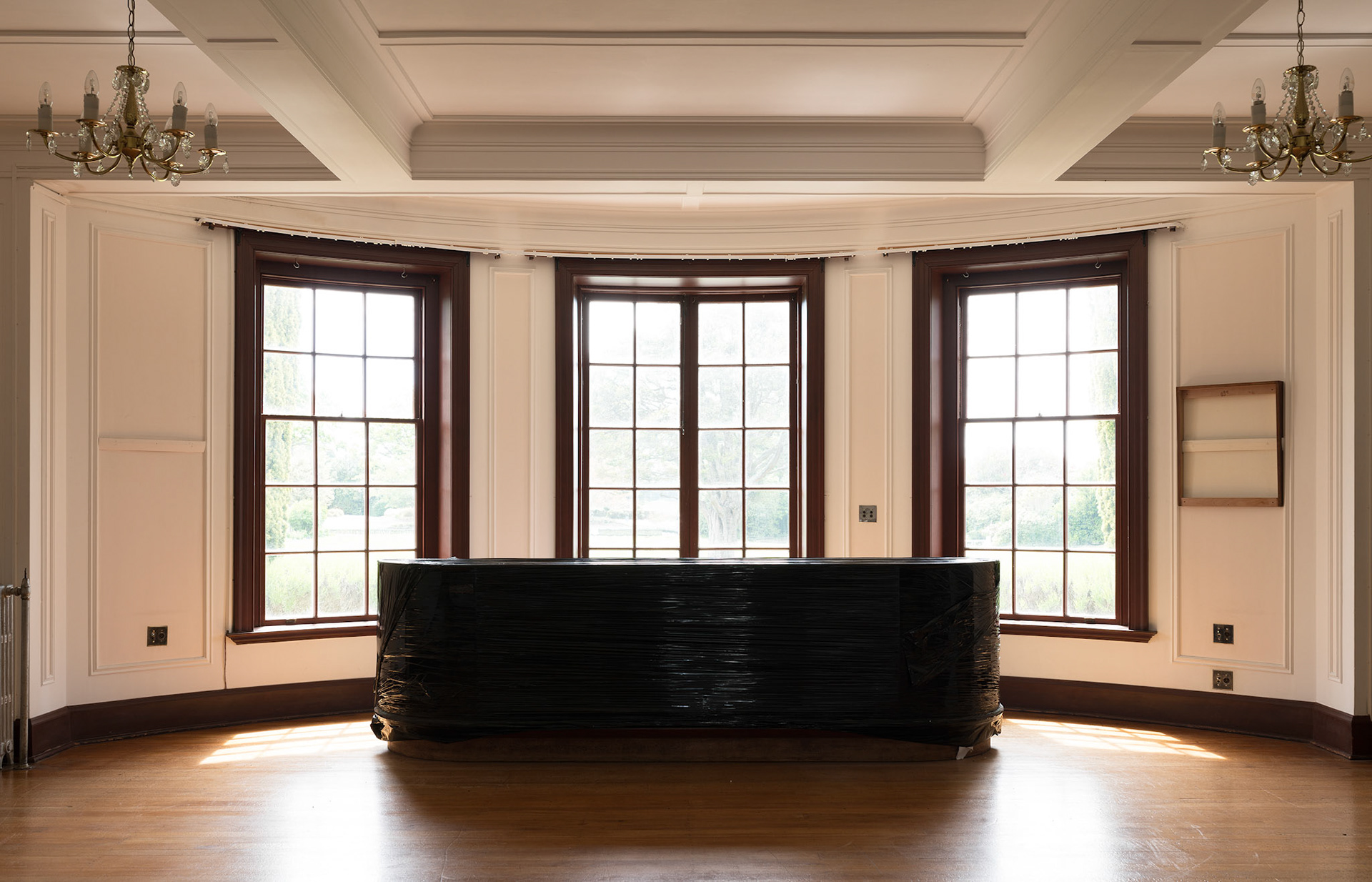
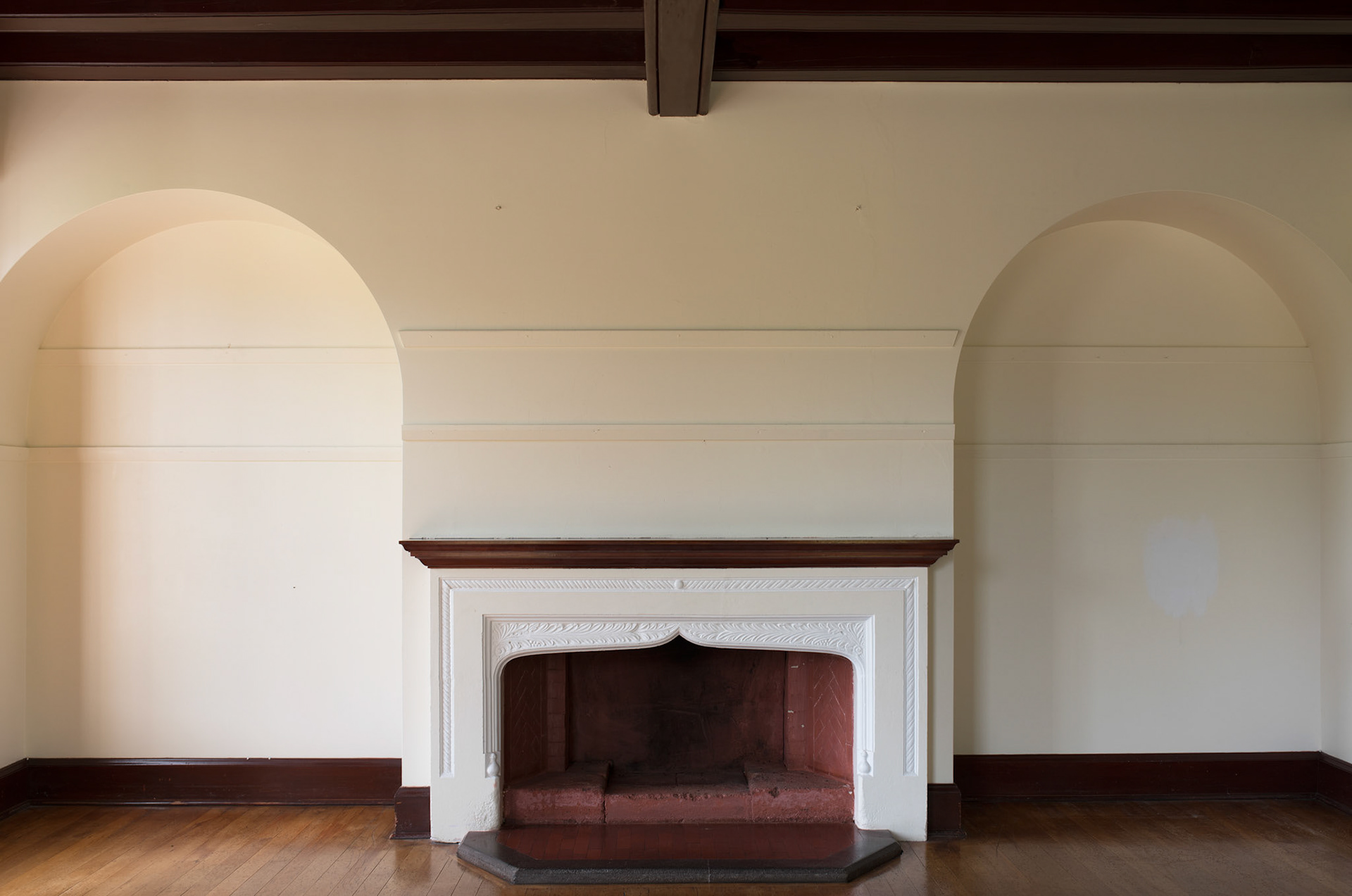
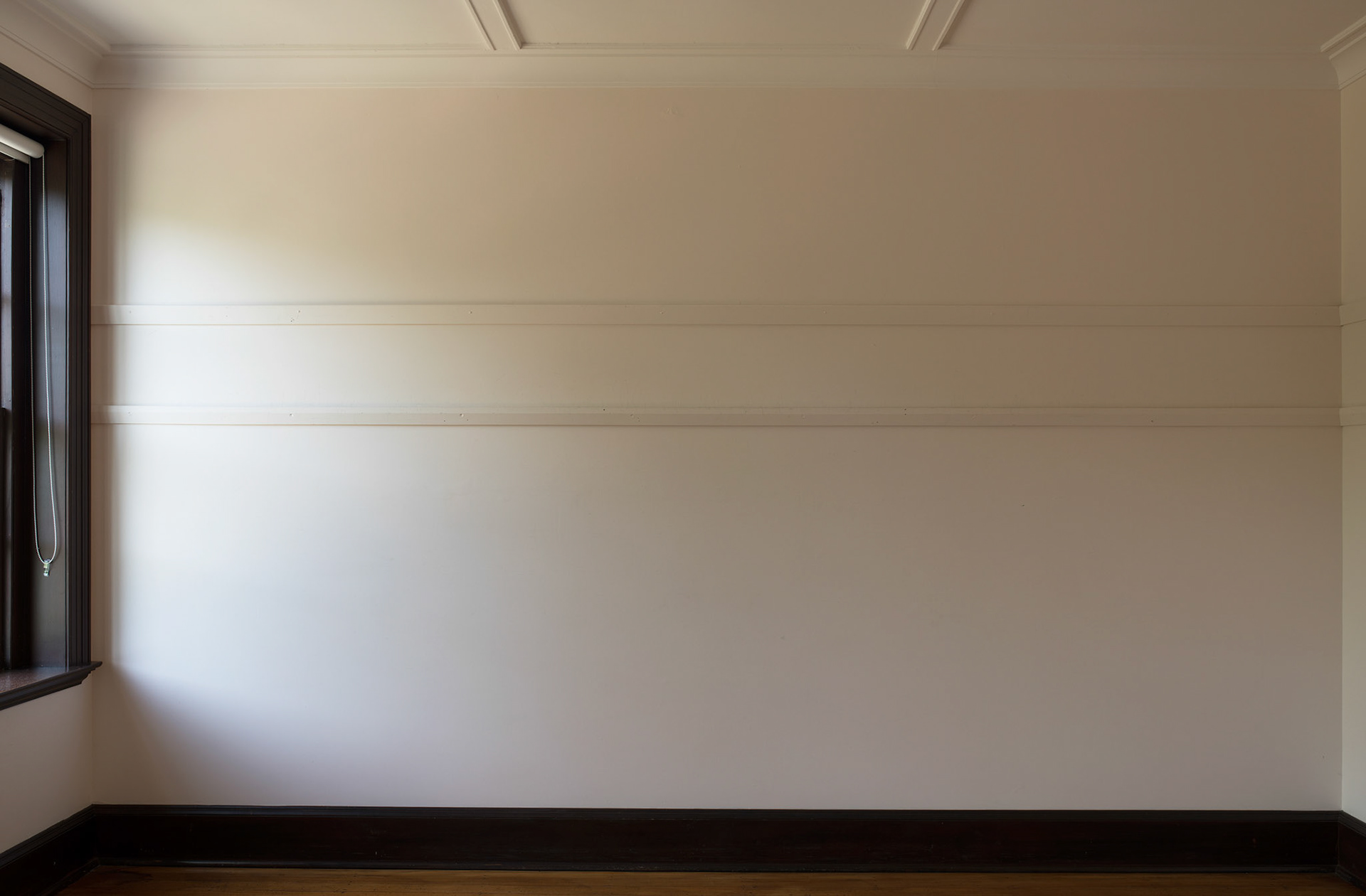

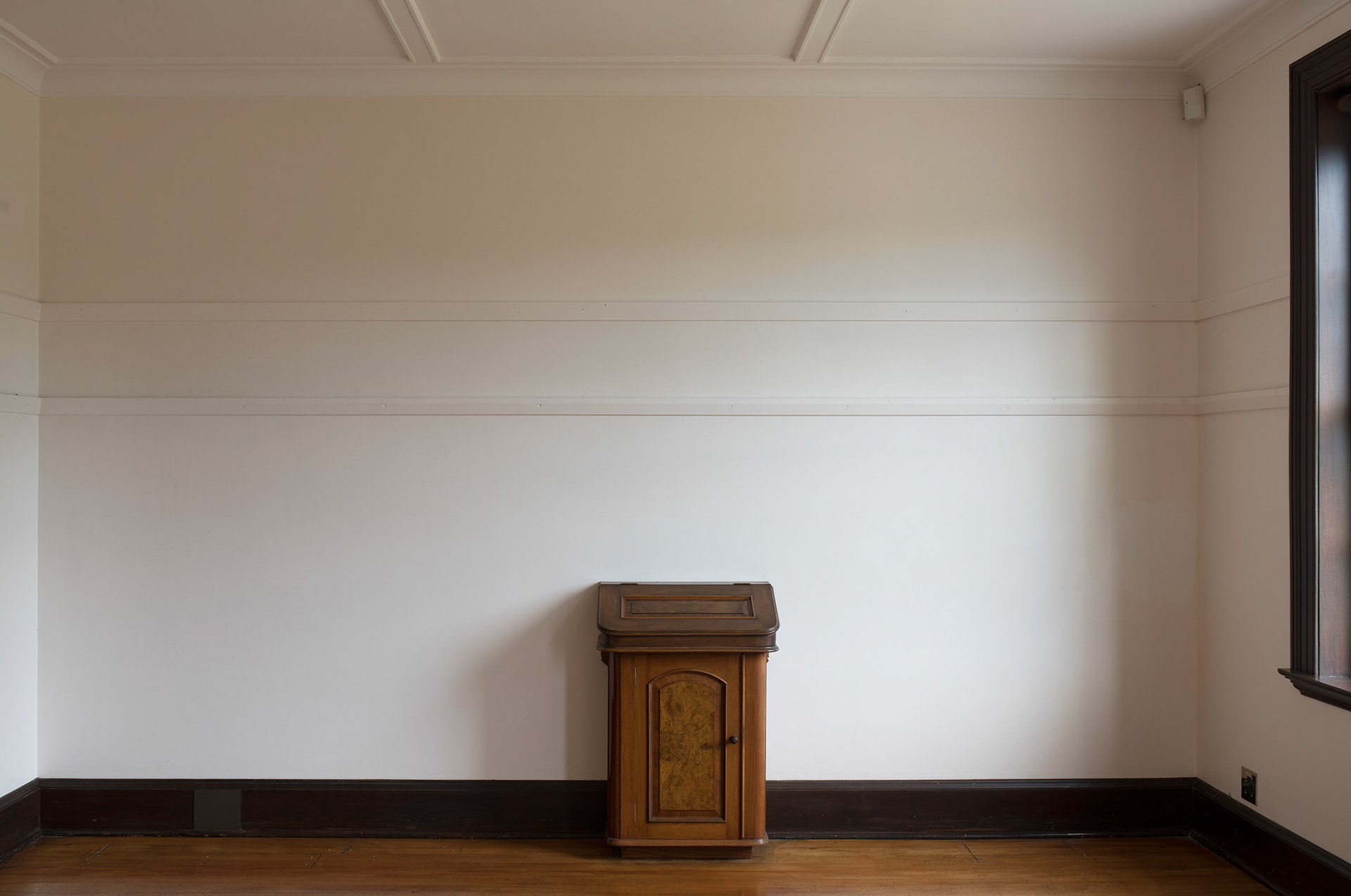


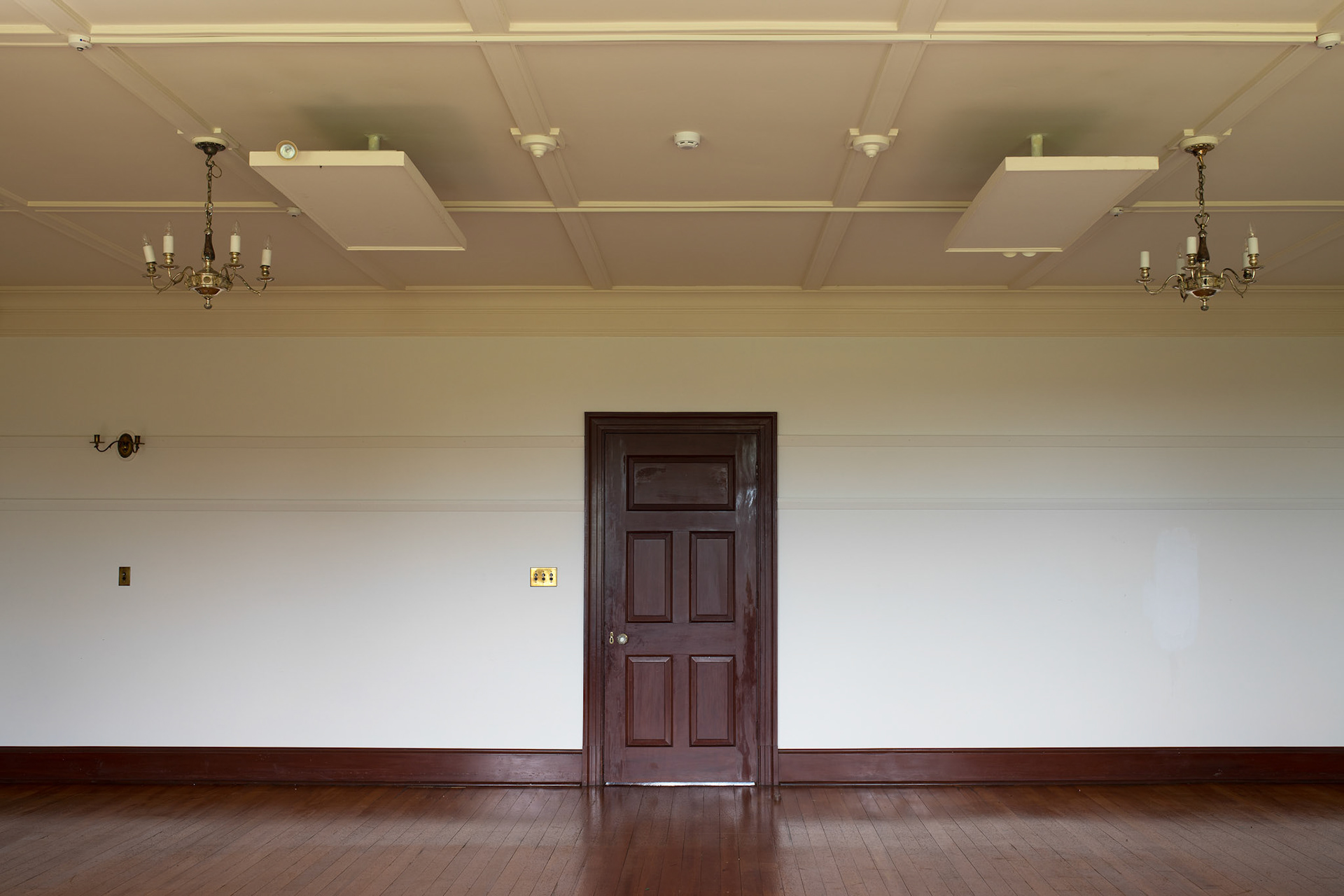


SHIFT - A Personal Connection
In October 2016, I returned to work from maternity leave. My child was four and a half months old and while I left my role as Assistant Manager of Anderson Park Art Gallery, I returned as Manager/Curator of the Invercargill Public Art Gallery. In my absence, the gallery had undergone a massive reevaluation of its core purpose and my previous manager/mentor/in-house barista, Stephen Davies, had resigned. To say it was a shock was putting it lightly. I went from naps and nappies, to meetings and making important decisions – all while trying to survive on broken sleep. Looking back, it was a crazy time.
In the midst of the craze, Adrienne Martyn, a renowned photographer, contacted me about undertaking a photography project at Anderson House. She had been in contact with the IPAG board while I was away and, after catching up on the details, it became apparent how awesome this opportunity was. She wanted to document the empty interior of Anderson House and our collection shift, donate several of the finished works to the IPAG collection, and hold an exhibition at the project’s culmination. At this time, full time staff at IPAG consisted of just me, and as such I was excited, but daunted, by the enormity of the task ahead. We pushed on and over the course of the year we worked through the details and red tape, as well as revising the project to suit the collection still being on site.
As you can imagine, I was thrilled come October 2017 when Adrienne finally arrived in Invercargill, camera in hand, to undertake this project. By this stage, my team of full timers had grown to three and the juggle of management and motherhood has become my new norm. I was more than ready to sink my teeth into this project.
Watching Adrienne work was eye opening. I have observed sculptors and painters undertake their practice, but never a photographer. Watching the methodical way she set a scene and waited for the light, was a testament to her attention to detail. For me, however, seeing the spaces how she did, through her lens, was the highlight. The interior of Anderson House, although always beautiful, had become confining for me due to my time spent there during its closure, before our operations moved to 5 Don Street. Through Adrienne’s camera, the rooms were stripped bare and the essence of the gallery spaces became the focus. Light and airy, the images she captured show the rooms at Anderson house, in my opinion, at their best.
After a week of intense work, labour and discussion, Adrienne had what she needed and flew back to Wellington to create her final bodies of work, which arrived at IPAG in early March 2018. Hanging these works was an interesting and cathartic experience for me, as it was as if our past had met our present, with our collection shift being the defining thread between the two. The final exhibition Adrienne Martyn: Shift, represents the first time that I have been involved with the entire process of an exhibition, from inception to completion. As a curator, we are so often presented with the finished works, without any insight into their creation. For that reason the works in this exhibition will always have significant personal meaning. For me, this exhibition also signifies the changes I have undergone professionally, and how much I have ‘shifted’ since returning to work. A project that I was initially daunted to take on has become a reality and I have loved the entire process. I thank you Adrienne, for giving me this opportunity.
Sarah Brown Curator/Manager Invercargill Public Art Gallery
'SHIFT - art of the move' was exhibited at Invercargill Public Art Gallery 2018